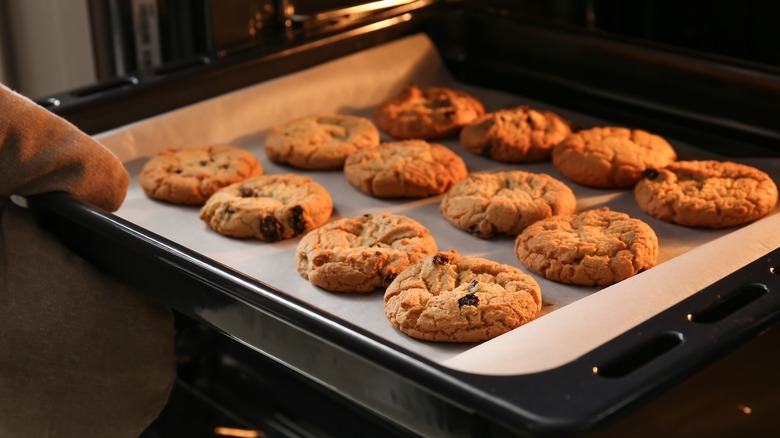We’ve all been there: cutting it a little bit close with dinner prepping and with a lot of dinner guests coming over, stuffing the convection oven to the brim with sheets of lasagna bolognese, trying to get everything ready on the dot. But look, as tempting as that is, you’re much better off taking it slow and keeping the oven’s chamber as free as you could.
Convection ovens, by definition, cook your food by letting hot air move around it. When you overcrowd the oven, you’re basically throwing a wrench in the works. The lack of air circulation leads to a bottleneck where part of the food gets overheated (which can lead to some charring), while the other is left in the cold and ends up undercooked.
This isn’t just about uneven cooking, though. When they’re lumped together, the food becomes thicker and requires more time to heat up in the center. Often the case, what you expected to be a shortcut will turn into a prolonged kitchen saga, and your plan ends up half-baked — quite literally.
Juggling space and air flow

Striking that balance between making the most of your oven space and avoiding the pitfalls of overcrowding is not impossible. For starters, heed the wisdom of kitchen-tested recipes, as they naturally factor in what the oven can handle. If you’re preparing more servings than the recipe calls for, spread the food across all of the racks instead of stacking them on just one. Think horizontally and vertically: Leave generous space between each piece of food, but also between the racks, to allow the hot air to do its dance.
This doesn’t just apply to trays of cookies or veggies, but to larger items like casseroles and roasts as well. Obviously, small, airy pieces of steamed broccoli need different spacing than thick slices of Orange Roughy to cook evenly — but no matter the size, the key is to make sure that the hot air can circulate freely and touch every part of the food’s surface.
Of course, the size of the baking sheets or pans matters too. Here’s the golden rule: Don’t let them take up the entire rack to the edges. It’s also wise to leave some buffer zone between the food and the oven walls to avoid uneven cooking or burning. You don’t want your roast chicken feast to end with you scraping chicken fat and skin off the oven walls anyway!






